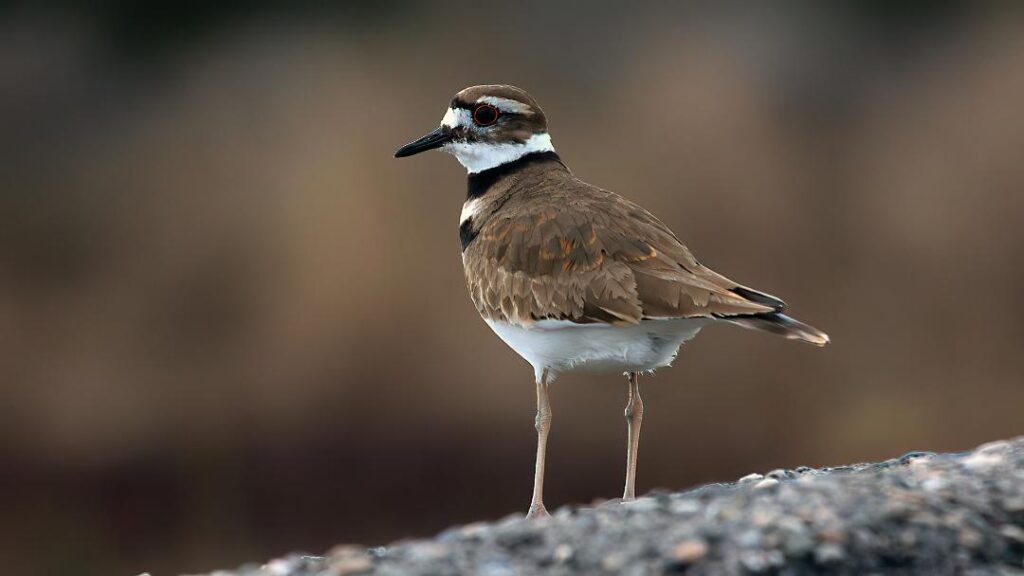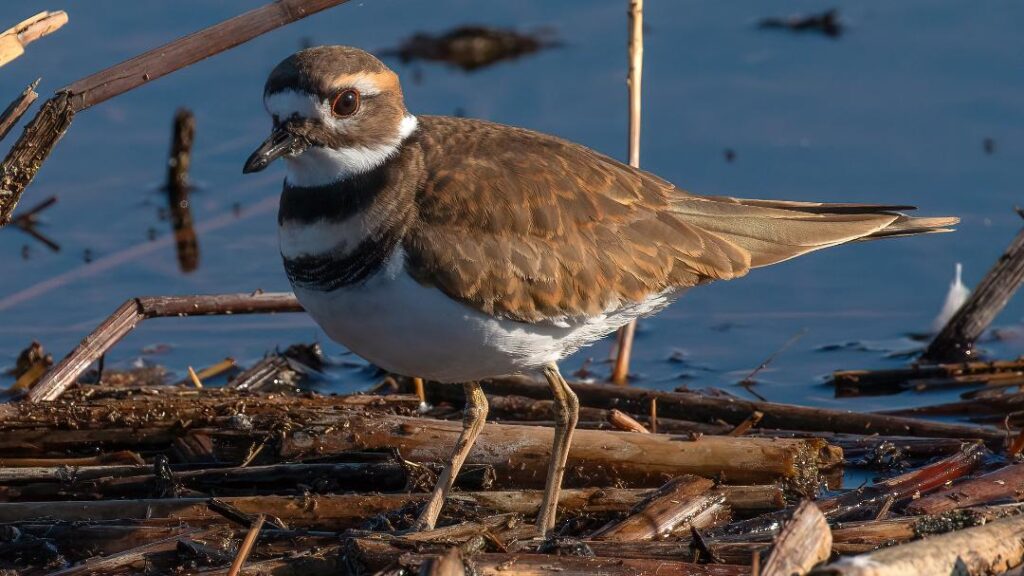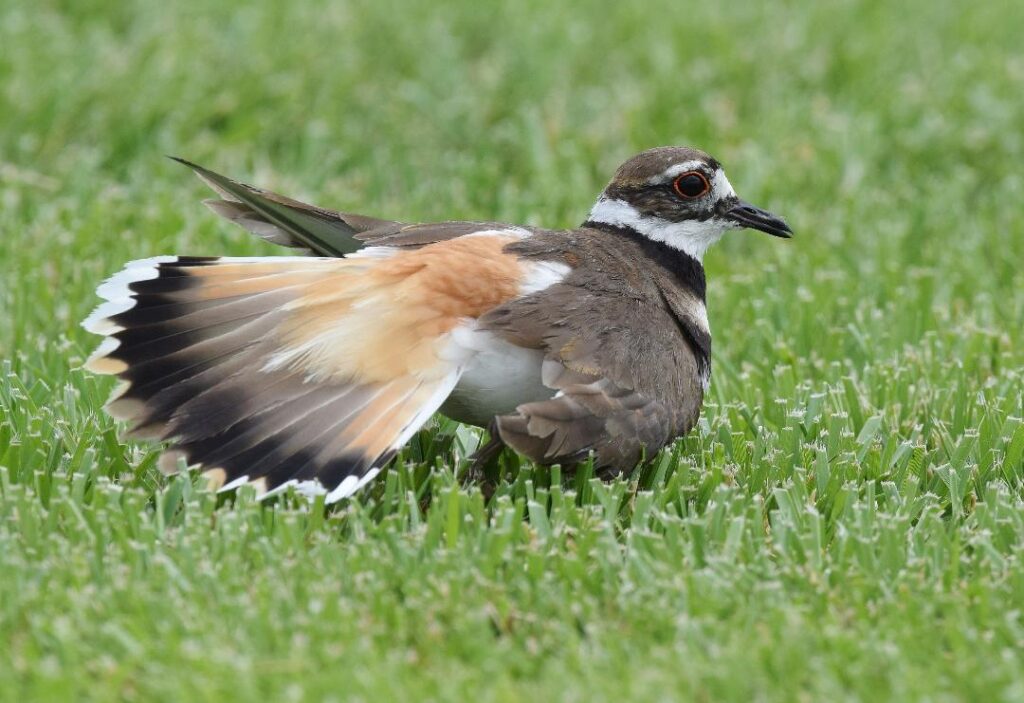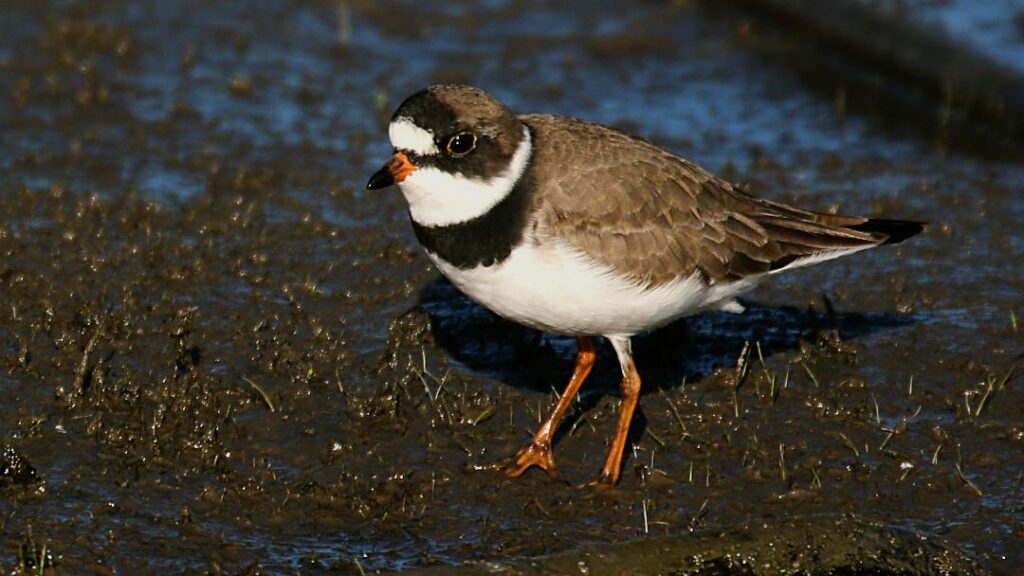The Killdeer (Charadrius vociferous) is a Common Resident in the San Joaquin Valley. Killdeer belong to the plover family Charadriidae, with 68 species worldwide. As their Latin specific name indicates, they are quite noisy (vociferous).
Description
Killdeers’ upperparts are mostly brown with white underparts. Their upper chest is interrupted by 2 black bands. The sexes are monomorphic (alike) and plumages are essentially identical throughout year.

Distribution
Killdeer can be found from Canada, south all the way to the coastal areas of Peru. In the Valley, Killdeer can be found in close proximity to humans, often in schoolyards, parks and businesses with dirt lots.
Nests and Young
Killdeer nests are located on mostly flat, gravelly open areas with little to no nesting material visible. They are also known to nest on flat graveled rooftops and parking lots. Killdeer young are precocial vs altricial at birth. A precocial bird is “capable of moving around on its own soon after hatching.” The word comes from the same Latin root as “precocious.” Altricial means “incapable of moving around on its own soon after hatchling.” It comes from a Latin root meaning, “to nourish,” a reference to the need for extensive parental care

Behavior – Injury-Feigning Display
The feigning display can be performed by either sex, usually by only one member of pair at a time. If both pair members are present, one usually gives alarm calls from a distance. In response to a potential predator, the Kildeer crouches, head low, breast-bands minimally showing, wings drooping and partially extended, sometimes flapping to beat against the ground, tail fanned and dragging the ground to display a rufous rump-patch. The displaying bird’s body is usually oriented away from a potential predator, but its head is turned to the side such that the bird looks over its shoulder at the potential predator.

Similar Species
There is another breast-banded plover species similar to the Killdeer that can be found in the valley during spring and fall migration. The Semipalmated Plover has mostly the same coloration and marking except that it only has one band across its breast and it is smaller.

Unlike the more widespread Killdeer, the Semi-palmated Plover is most often found near water. Look for it around lake and pond margins and in flooded farm fields. Be sure to note the small bill with its orange base and the white forehead.


Vociferous! The Killdeer can show us a thing, or more. We Valley Citizens could be very noisy. Lifting our voices, in unison, about the many unjust actions we, thus far, allow to happen, locally, without even so much as letting out a wimpy peep. Not even a salty tear.
What will happen to the Semi-palmated Plover as the water margins dry? Everywhere? What will happen to our species? Creation suffers manmade drought. Not so much unintentional.
We had the pure majesty of healthy ecosystems, but they were not good enough for some, who were not content, without meddling where they did not belong. Water has become commodity, rather than life saving nectar from Earth
Thank you, Jim Gain, for sharing your art, I apologize that the sheer beauty brings sighs, not of relief…